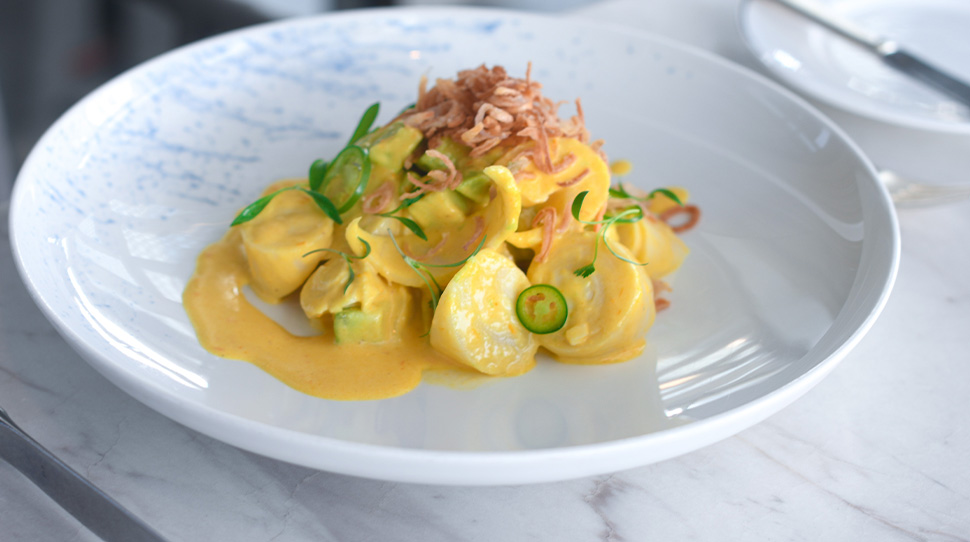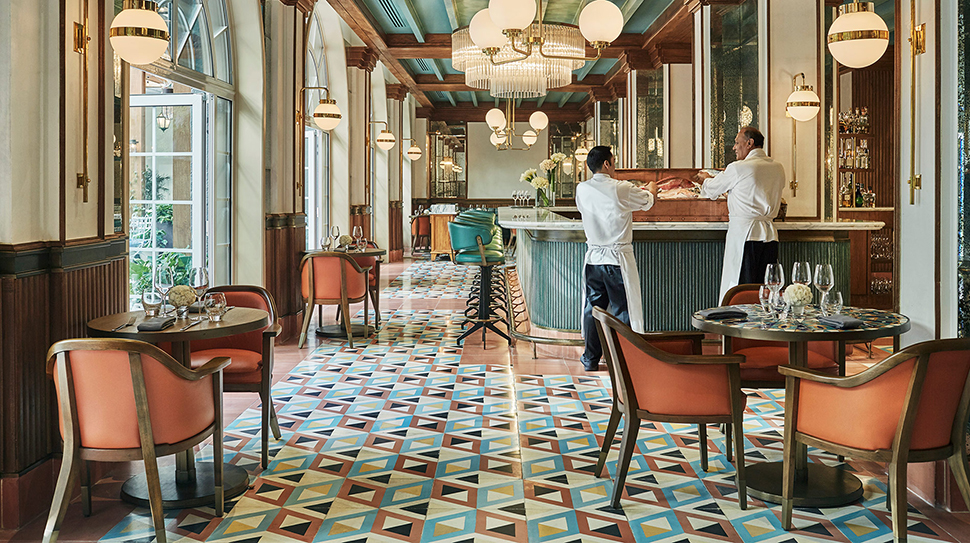

If you are a first-time Mexico City visitor, prepare for the culinary scene to blow your mind. You may think you know Mexican food from having ordered it countless times back home, but the variety of local fare will undoubtedly surprise you. As it turns out, Mexican cuisine includes a wealth of dishes beyond tacos with flavors that far exceed what has come to be known as Tex-Mex.
While a lot of Mexican dishes share ingredients — antojitos, or snacks, like sopes, tlacoyos and huaraches all use corn dough and toppings like refried beans, sour cream and salsa, for example — the country’s diverse cultural influences, both indigenous and European, gave way to a robust cuisine that is not easily found outside of the country.
We rounded up the dishes you’ll want to try on your next visit to Mexico City — and where to enjoy them. Contrary to popular belief, not all of Mexico’s dishes are spicy, however, you still might want to take it easy with the salsas — a little goes a long way.
Ceviche
Listing ceviche as a Mexican dish is bound to be controversial, as many people have come to associate cebiche with Peruvian cuisine. But ceviche and cebiche are cousins that originated with the Spanish Conquest when Spaniards brought limones to the continent. More than a dish or a recipe, ceviche is a way of cooking — macerating fish in citrus juice. The difference between the Peruvian and Mexican versions is the ingredients. Peruvian cebiche always has leche de tigre — the sauce it’s served with — and may be topped with yuca, sweet potato and corn kernels, while the flavors more present in Mexican ceviche are cilantro, tomato and avocado.
Where to try it: Diana Restaurant
You can find ceviche at most restaurants that specialize in seafood — you can’t go wrong with ContraMar — but for something different, or if you’re vegan, try the palm heart ceviche at The St. Regis Mexico City’s Diana Restaurant.

Esquites
While the word esquite originates from the Nahuatl term izquitl — which means “roasted corn on a skillet” — modern-day esquites are boiled in a large pot. Sold streetside in a cup with the soupy liquid they were cooked in, these corn-kernel snacks are loaded up with mayo, chili powder, lime juice and grated white cheese. You’ll want to eat them while they’re still hot.
Where to try it: Anatol Kitchen
Esquites are typically sold on street carts throughout the city — outside supermarkets is a safe bet. But for an elevated version, try the crab esquites at Anatol Kitchen in Las Alcobas, A Luxury Collection Hotel, Mexico City.
Mole
Mole (pronounced “mo-leh”) is a sauce that’s prepared in numerous ways depending on the region. Most know the Puebla and Oaxacan style, but there’s also verde (green mole) and pipián (made with pumpkin seeds), among some 50 other varieties. Much like Indian curries, assembling this rich sauce from scratch requires a lot of labor and ingredients. Legend has it that the recipe, which originated in pre-Hispanic times, evolved thanks to a 17th-century nun who prepared it for a visiting aristocrat with whatever the convent had in the pantry — including some chocolate.
Where to try it: Azul Histórico
Traditionally served over chicken with a side of rice, mole can also douse other kinds of meat — like duck or turkey — and even dishes like chicken enchiladas. Azul Histórico is a great place to try it on account of its options. Not only does the restaurant serve three kinds of traditional moles, it also has an offering not found anywhere else: fried dumplings filled with roasted duck slathered in mole.
Panuchos and Cochinita Pibil
Hailing from the Yucatán, panuchos are fried tortillas stuffed with refried beans and topped with cochinita pibil and pickled red onion. Take a moment to savor the cochinita pibil: this slow-roasted pork that originated with the Mayans is cooked by marinating the meat in orange juice and achiote (anatto seeds) until it’s bright orange and easily pulled apart. Cochinita pibil is juicy and flavorful — and yes, it can be eaten as tacos, but the panuchos add a punch. Sprinkle two or three drops of habanero sauce on top — that’s all you’ll need.
Where to try it: Costa Guadiana
Costa Guadiana and Guadiana are good choices to taste panuchos and cochinita pibil. Both restaurants usually start things off with a small complimentary serving of caldo de camarón (spicy shrimp broth), so you’ll be able to sample yet another little-known Mexican staple.

Pozole
The quintessential dish for Mexican Independence Day — which is September 16 and not May 5 — pozole is a hearty soup made of hominy, chicken or pork, and studded with chili powder, oregano, chopped lettuce and onion, radish, avocado and lime, with fried tortillas on the side. Pozole is typically served as the main course. When ordering it at a restaurant, go easy on the starters because the portion likely will be huge.
Where to try it: La Casa de Toño
While some upscale restaurants will serve pozole come September — Zanaya at Four Seasons Hotel Mexico City being one of them —it’s not a year-round menu mainstay. Should you travel at any other time, a simple but solid place to try it is La Casa de Toño. Its list of pozoles is long, and it even makes a delicious vegetarian version with mushrooms and zucchini flowers.
Chiles en Nogada
Another September classic, chiles en nogada are poblano chiles stuffed with minced meat (picadillo) and crowned with a walnut sauce (nogada) and pomegranate seeds. Be aware that the sauce is a little sweet and served at room temperature, so it might be an acquired taste. But rest assured that, come September, the locals will scour the city in search of the year’s best chile en nogada.
Where to try it: El Cardenal
El Cardenal is one of the most traditional Mexican restaurants in the city, making it worthy of a visit. It prepares chile en nogada with classic ingredients, but the restaurant can make some modifications based on your preference.
Pescado a la Talla
With long stretches of coastline bordering the country on both sides, many Mexican dishes stem from the sea. Fish and seafood are a cornerstone of Mexican cuisine in many regions. Enter pescado a la talla: originally from the state of Guerrero, home to Acapulco, this fish has been butterflied, smeared in chili sauce and grilled to crispy perfection. Squeeze some lime juice on it and enjoy.
Where to try it: Puntarena
While some Mexico City restaurants will serve a ready-sliced fillet for you to eat on your own, there’s nothing like seeing the whole grilled beauty at your table, so order to share. Puntarena will not disappoint.
